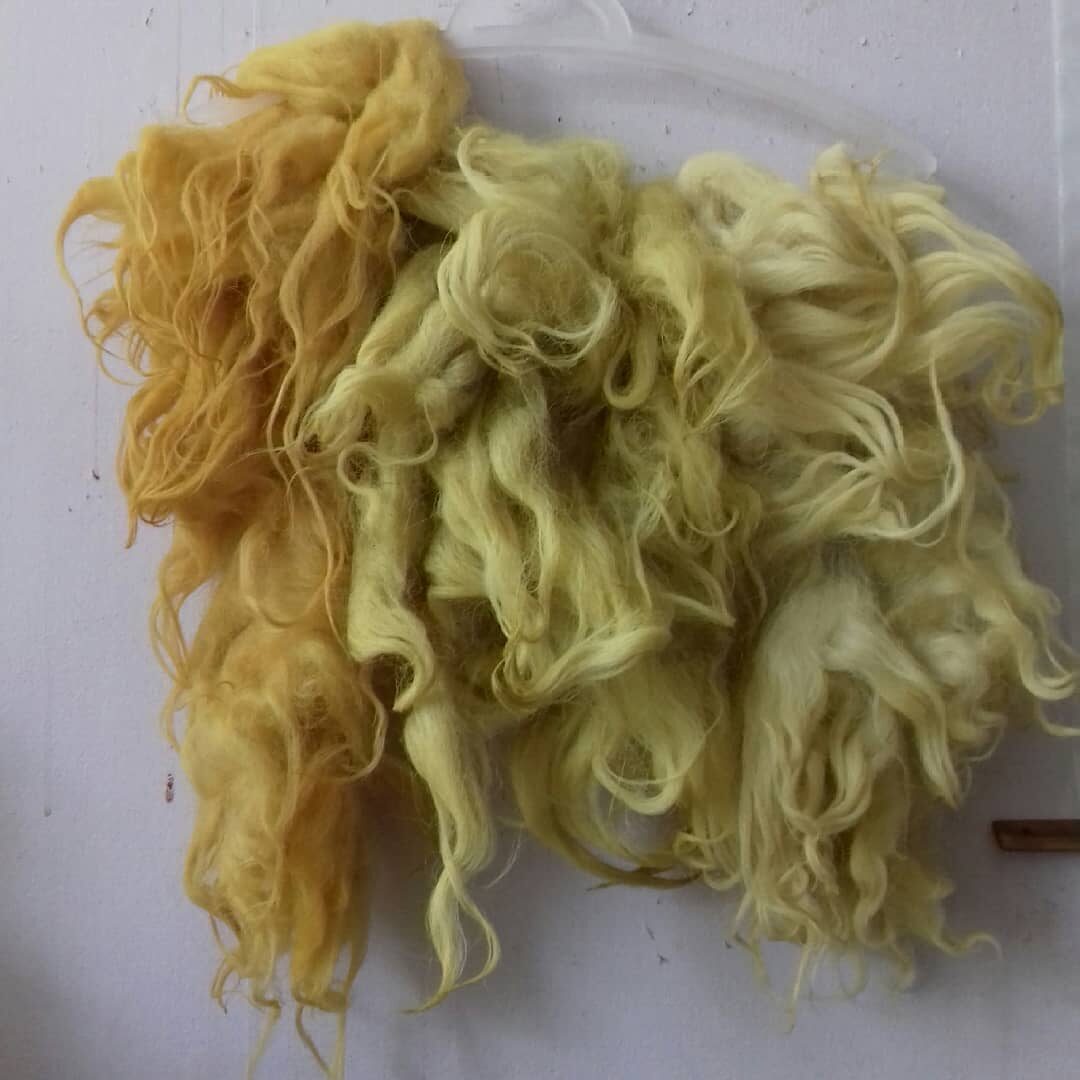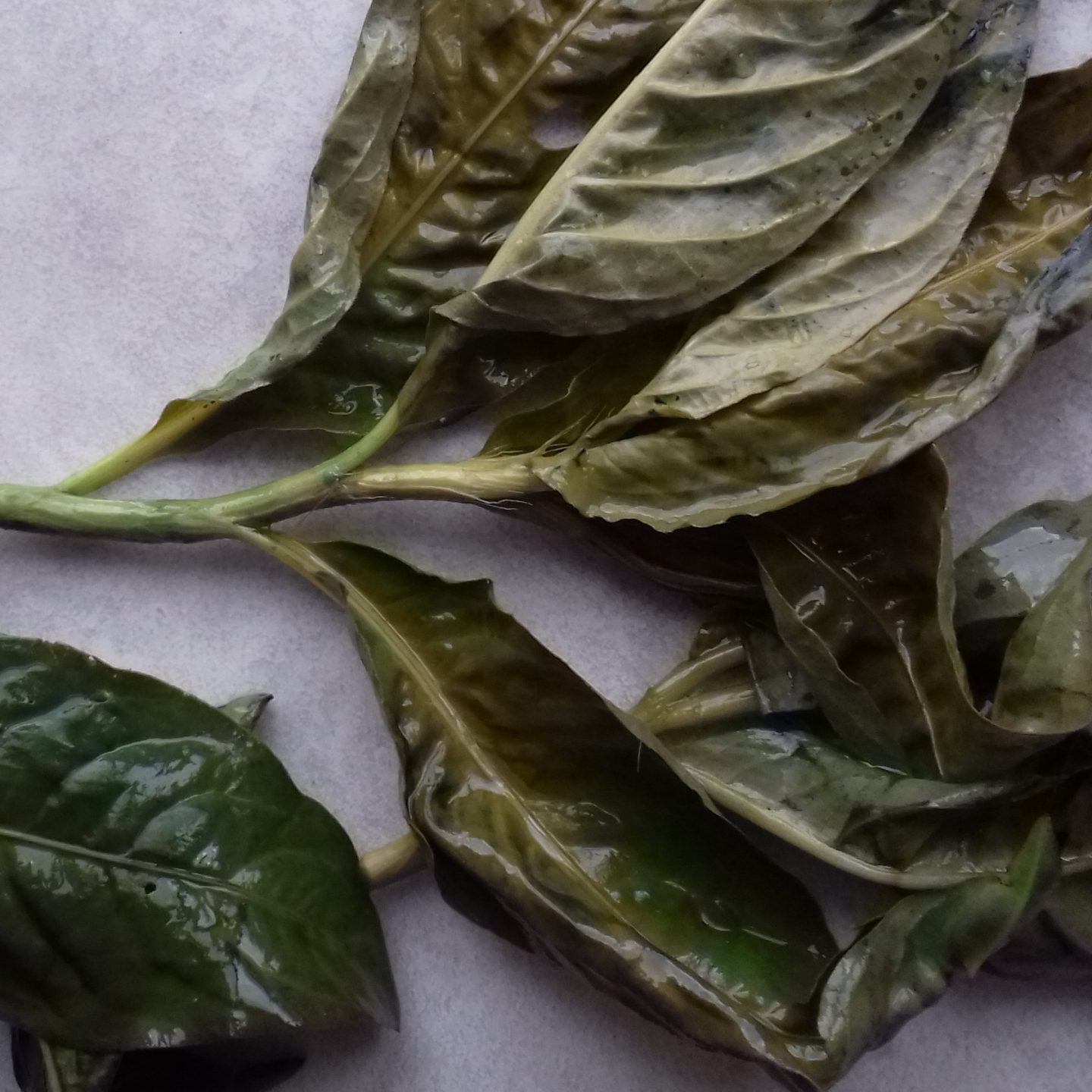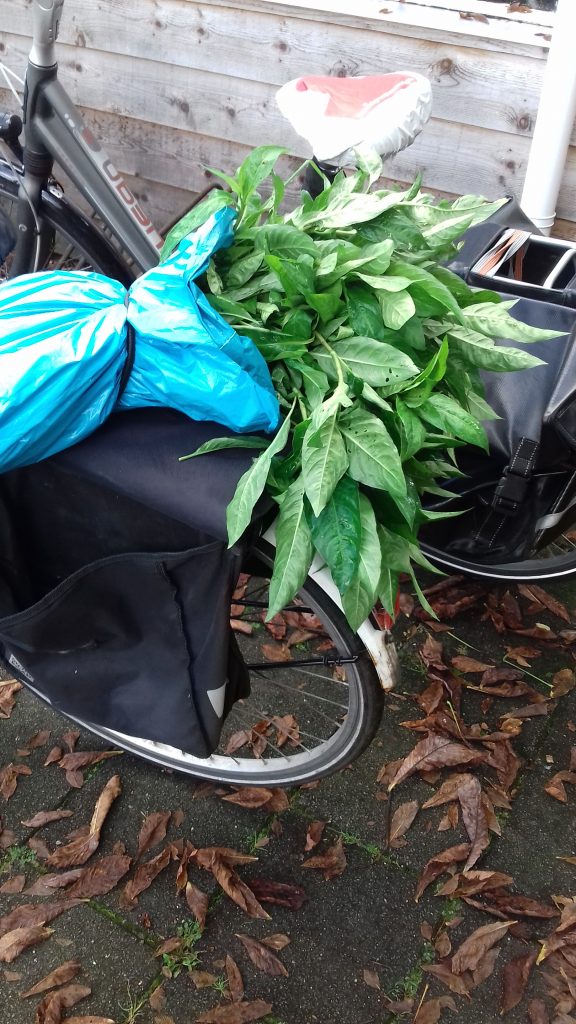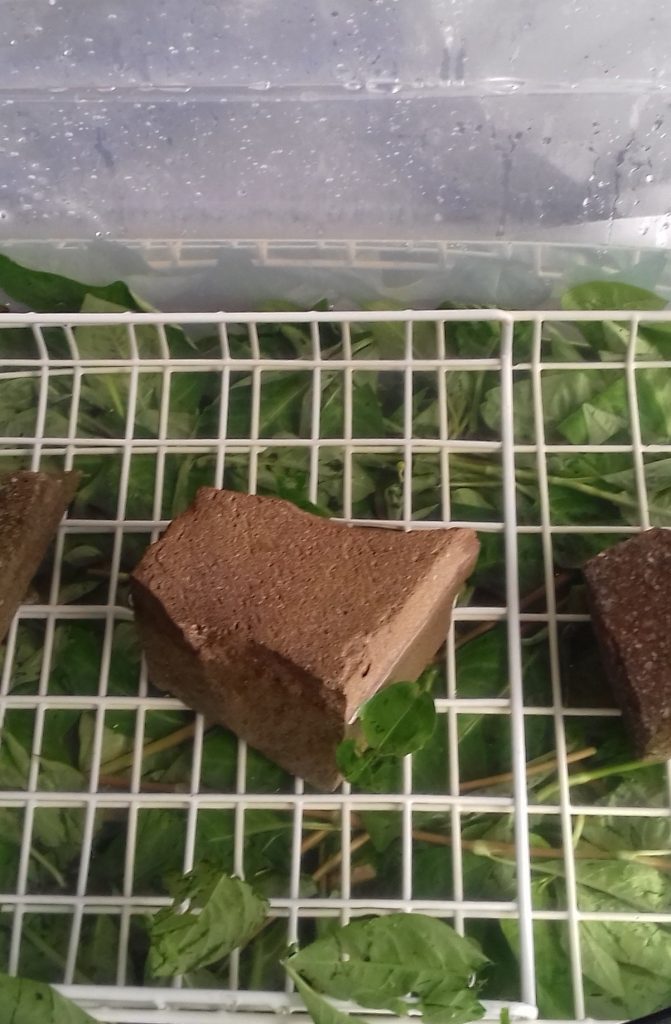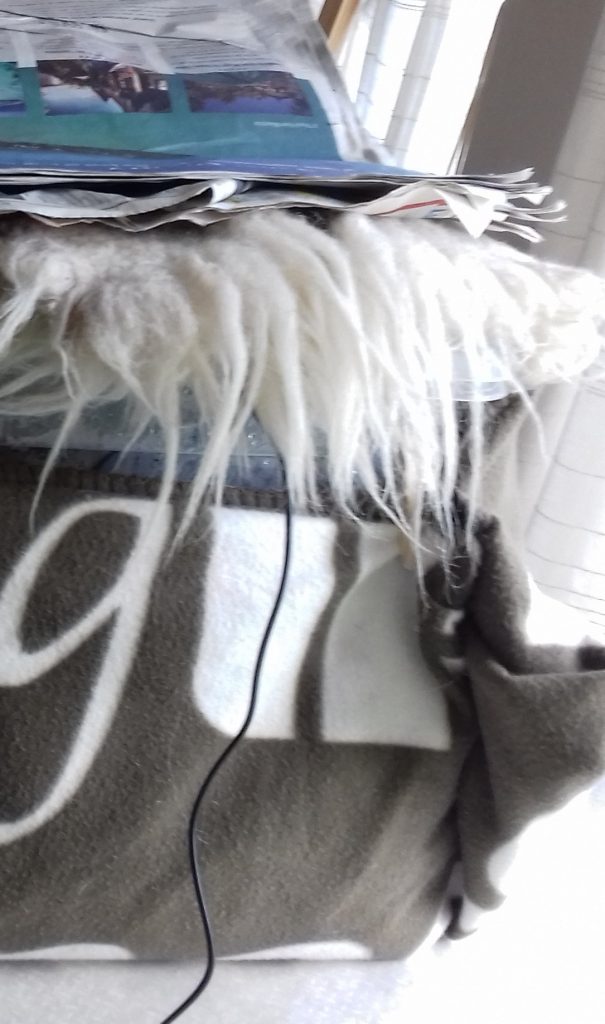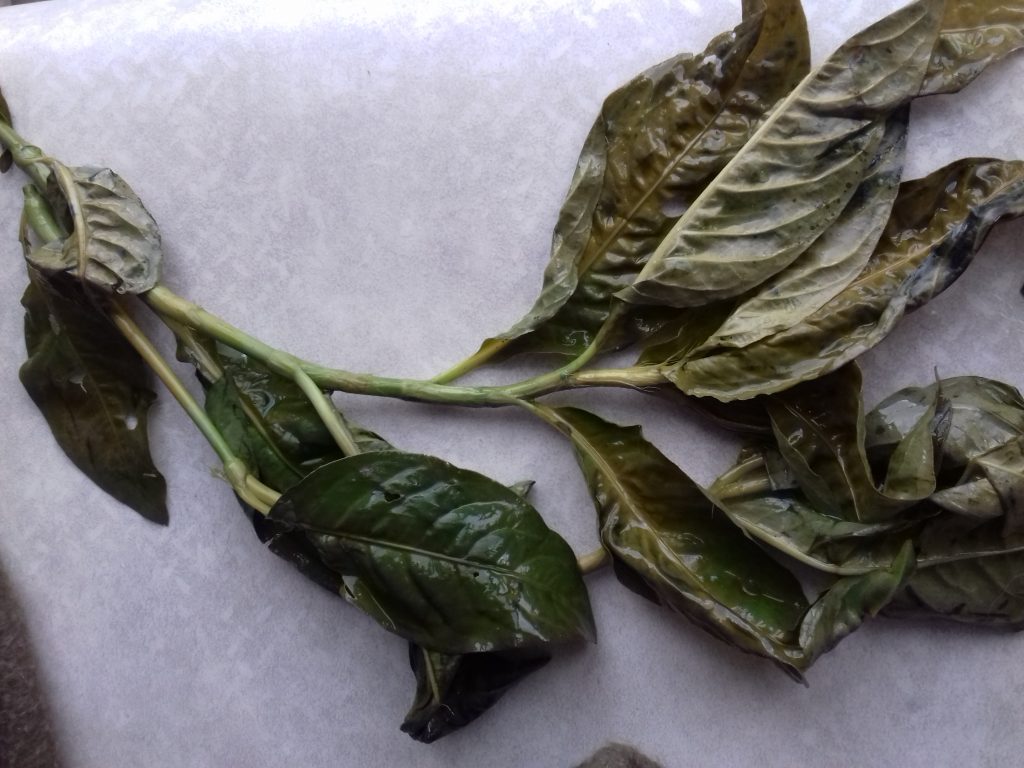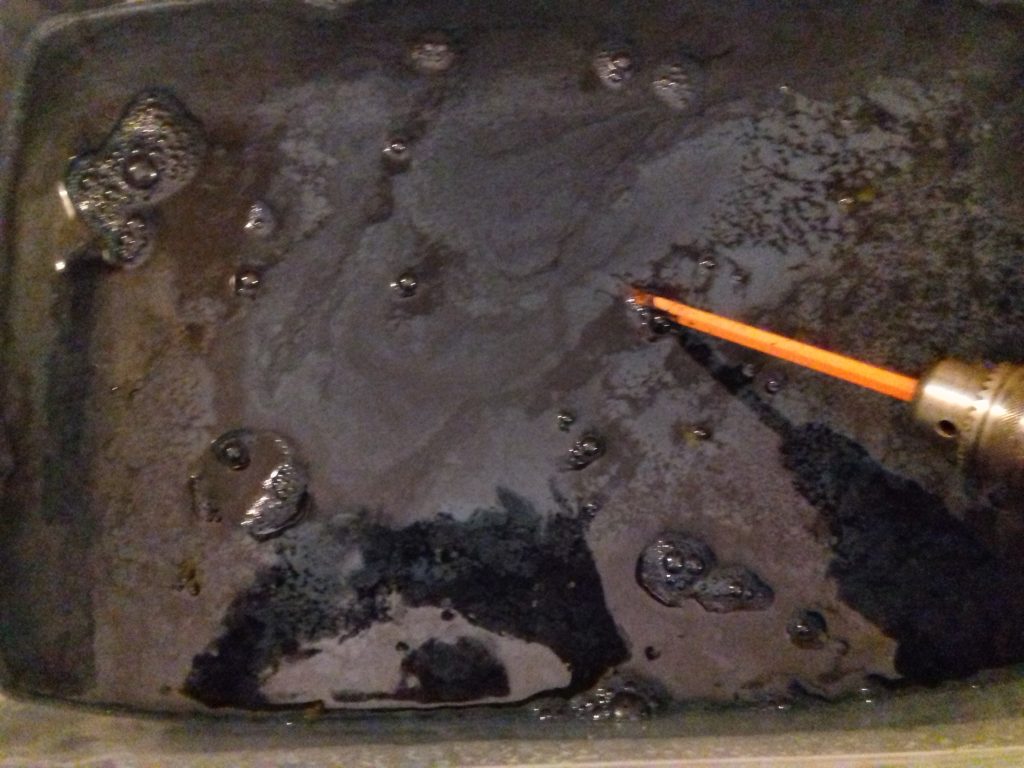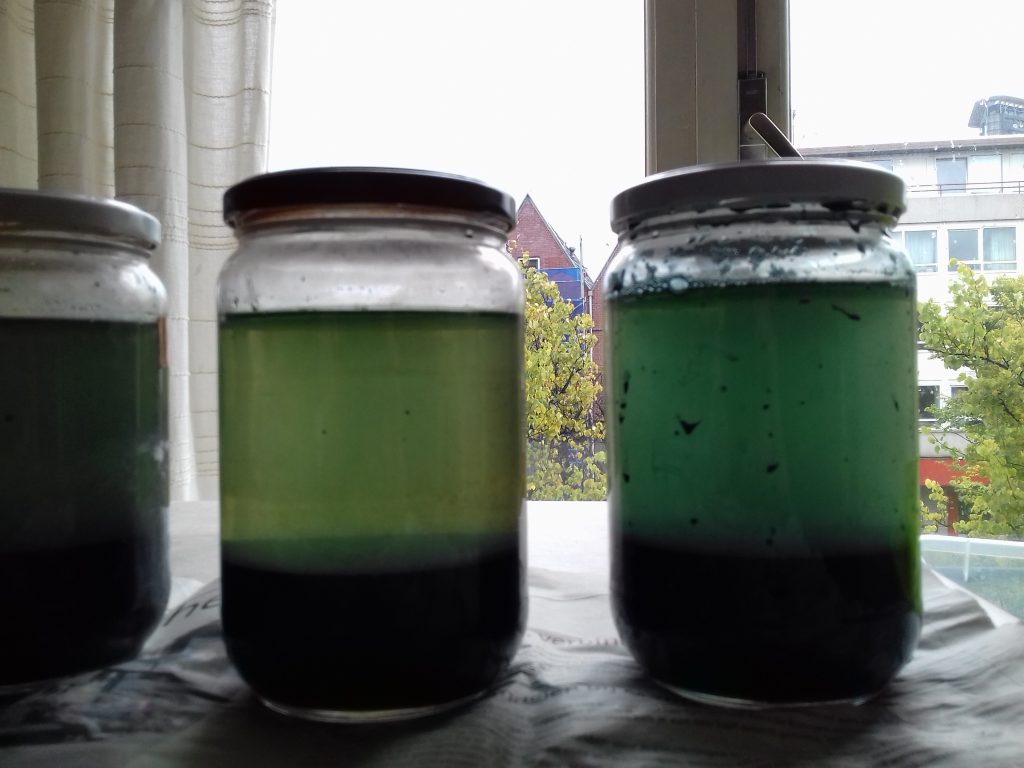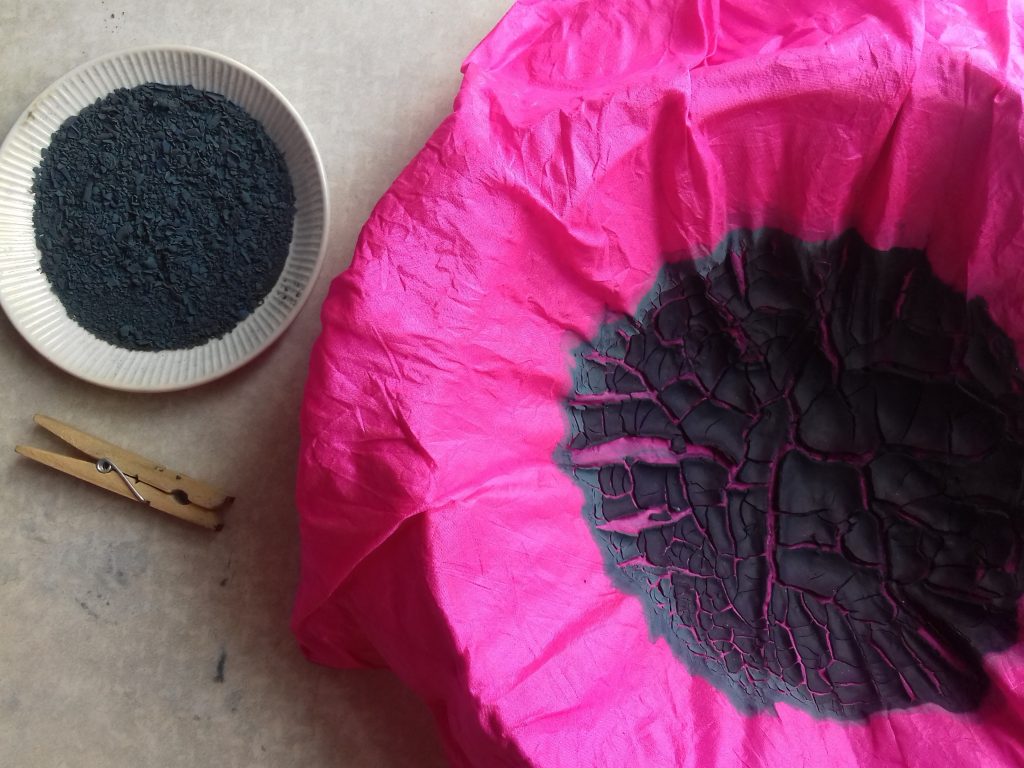In the past I have dyed with my Japanese indigo plants when they were fresh. I have had good results with it, but I am not always ready to dye when the plants are ready. As an experiment I extracted the indigopigment from the fresh plants to dye with it later. Below are pictures of this process.
I think the extraction was succesful, but the pigment looks a bit less dark or concentrated than the indigo that is on the market. It was on the shelf for more then a year before I came round to dye with it. I decided to make the vat with the fructose-lime method as developed by Michel Garcia. This is a method that is harmless for the environment, although I have some doubts that it is harmless for wool because of it is high alkalinity. I rinsed the dyed wool several times and added a slush of vinegar to the rinsing water. I am not sure how much this will help. When the vat was a little older, up to 4 days, this seemed to be less of a problem. I have adapted the amount of indigo pigment. I used 17 grams and I made the vat as if it were 10 grams because the indigo seemed less concentrated. It was only a small test vat, about 3 liters.
Below is most of the dyed wool, it is about 100 grams. This not as much or intense as I would have dyed with a different method and fresh leaves, about half as much. But still a lovely color that reminds me of the sky. I am not sure if it is worth all the effort, but a very nice idea that it is possible to do this at home!
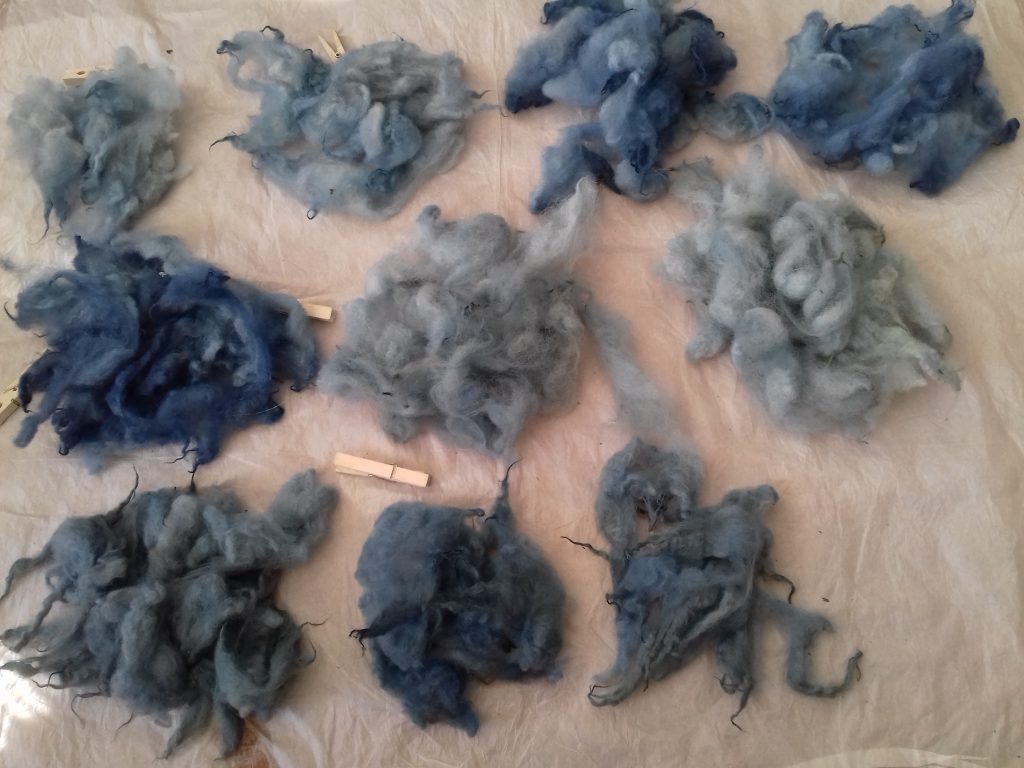
It inspired me to make a felted hanging called ¨Bits of sky¨, in or in Dutch language ¨Stukjes lucht¨.
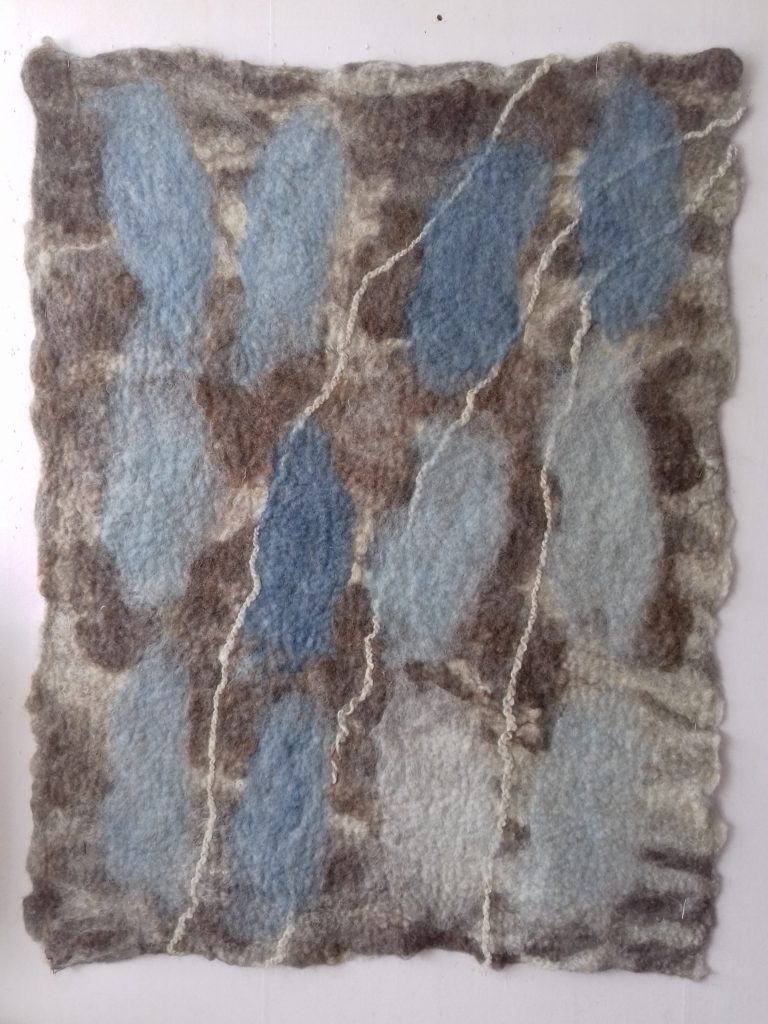
wool: multicolored schoonebeeker and big heathsheep
dye: indigo
A recipe to make a indigo vat with fresh leaves of Japanese indigo on: Riihivilla´s pages.
A method to extract the indigo pigment from fresh leaves of Japanese indigo or Persicaria tinctoria on: Ecotone threads
A recipe for the fructose-lime indigo vat can be found on : Maiwa’s pages
